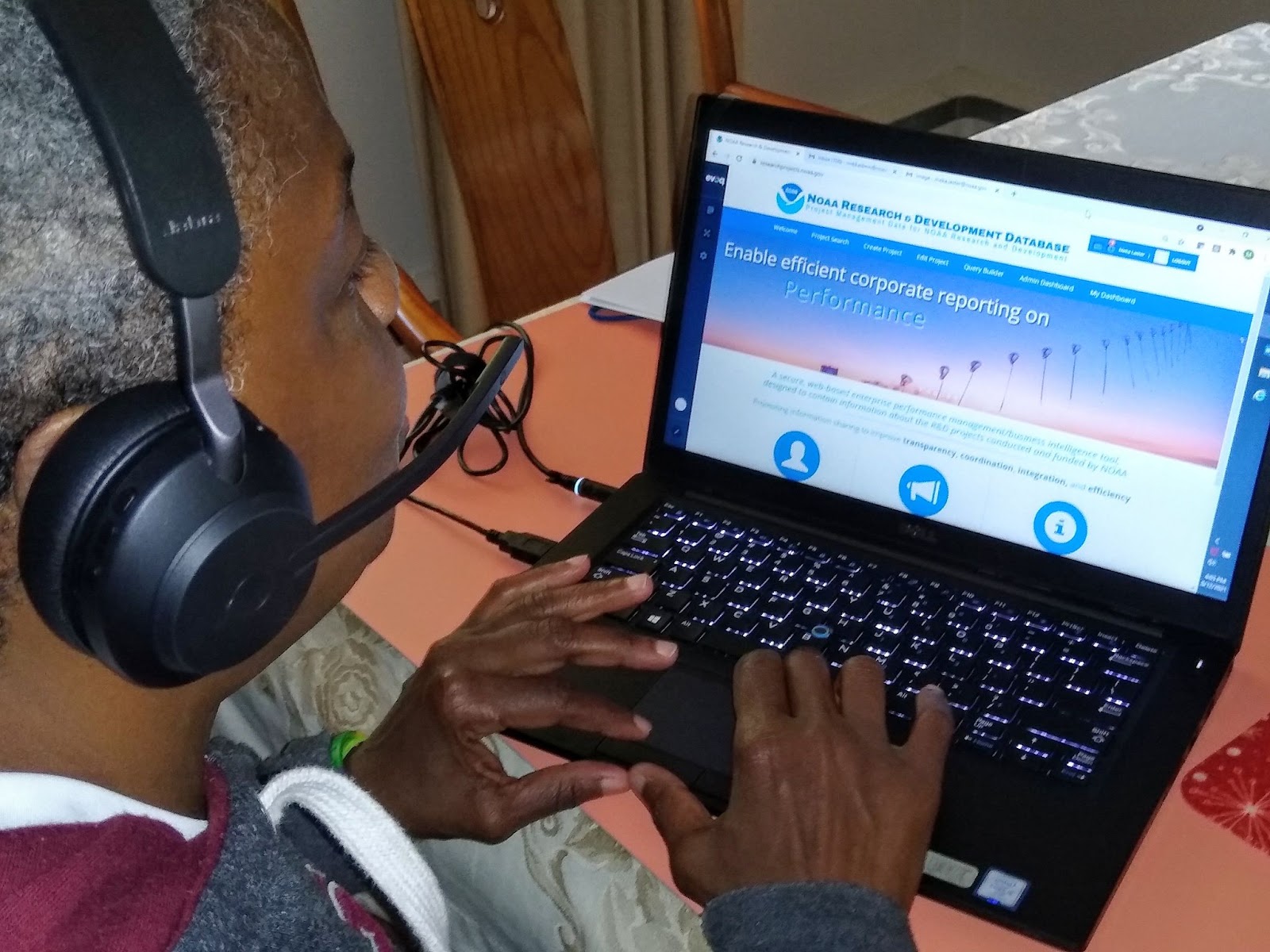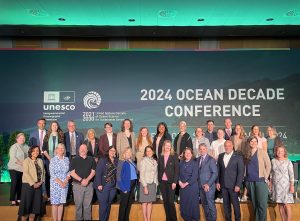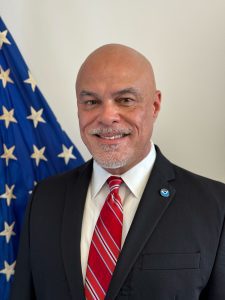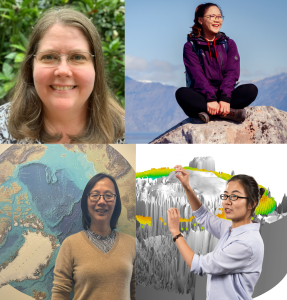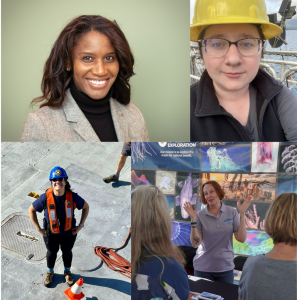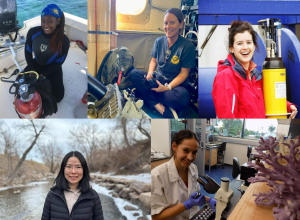An interview with NOAA’s Meka Laster
By: Miguel Aristu
Having dedicated her life to NOAA for more than 20 years, Meka Laster currently serves as director responsible for implementation and growth of the NOAA Research and Development Database (NRDD). Meka, however, is not only a specialist in engineering management, but an advocate for scientific outreach who radiates her passion for education anywhere she goes. If there is something crystal clear for Meka Laster, it is that NOAA’s biggest asset is the people. Indeed, her commitment to educating younger generations is reflected throughout her entire career, from her prolific work at NOAA’s Office of Education to her efforts at a science afterschool program for elementary school. For those considering a career in environmental science, Meka’s story is all you need to embark on this journey.
Please, take us back to the beginning. What was your career path like and what drew you to work at NOAA?
I am an electrical engineer by training. I came out of school way back in 1983 and started out as an engineer at a private company up in Massachusetts. Although I had a great time going to school in Upstate New York and then working for four years in Massachusetts, I am a Washingtonian, I was born and raised in D.C., so at some point I wanted to come back home. Since my dad worked in the government, at the Department of Transportation (DoT), I always envisioned myself pursuing a government career as well. I ended up joining the DoT to work with crash avoidance technologies. After a great four-year run at DoT, I realized I wanted to do something different.
It was during the ‘90s when I first learned about NOAA. I knew I didn’t have a background in atmospheric or environmental science; however, as an engineer, I was confident I could apply my knowledge and have a meaningful contribution to NOAA’s missions. I literally applied online for a position available at the National Weather Service (NWS) and got it! I first joined the Automated Surface Observing Systems (ASOS) program, which is aimed at developing weather sensor technologies for the Federal Aviation Administration (FAA) to aid pilots during take offs and landings.
I still remember the last project I worked on for the Weather Service, a freezing rain sensor. It was 1982 when the awful accident in which a plane that was taking off from Ronald Reagan Washington National Airport ended up crashing into the Potomac River. Out of the 78 passengers, only four survived. The cause of the accident was found to be pilot error due to ice on the wings, so the FAA was looking for new technology that would help pilots know when to deice the plane.
Overall, I had a wonderful time at the Weather Service. I was able to do a lot of field work and participate in many projects aimed at testing out different sensor technologies. One day I would be in Texas on top of a roof in the middle of summer working on sunshine sensors – not to say I would be so tan at the end of the day; and another I would go out to our winter test site up in Johnstown, Pennsylvania, and try to make it to the sensors as the snow would be up to my waist and the deadly cold wind would whip my face.
It was an amazing ride and, most important, I felt very happy working towards making people safe and facilitating travel by air and roads.
Why did you decide to transition to NOAA’s Office of Education?
I have always been passionate about teaching. My parents were educators, so it was in my blood. Actually, when I got my Doctor of Science in Engineering Management from George Washington University, I really thought I was going to go back and teach, so I was very excited to join the Office of Education. This new position basically allowed me to help the next generation of NOAA employees as they got their Bachelor’s, Master’s, and if they wanted to, their Doctorates. Hopefully, they would come back to work for NOAA at some point.
During this period, I was also able to have more contact with all those wonderful educational programs we have at NOAA, such as the Hollings Scholarship program that hosts around 120 undergraduate students from all over the United States, and the Educational Partnerships Program (EPP). These resources did not exist when I came along and, to this day, I recommend these programs and advocate for them. It is a win-win for both parties involved: students get to understand what work culture is like and what it means to apply their science knowledge to a project, while NOAA attracts and motivates its prospective workforce. It was very fulfilling to see people come in as interns, find their way, and realize what their passions are.
I strongly encourage any student who reads this article to apply for our educational programs, as they are a unique opportunity for them to get all kinds of professional development experiences and be mentored by highly recognized scientists. In addition, they receive tuition assistance and a stipend, as well as money to go to school, conferences, and professional association meetings.
What role do you think NOAA plays in educating and training younger generations?
Vital! and I truly mean vital. Who is going to be our next climate scientist? Who is going to take over once we are no longer here? They are over there in the elementary school! That is where they come from, and we must start educating and inspiring them as early as possible – sometimes even before elementary school, like pre-K and Kindergarten.
Before COVID-19 hit, I was also working in an afterschool program at an elementary school in my neighborhood. I would literally take all kinds of NOAA materials including pamphlets, books, maps, and brochures to supplement their science programs. By sharing all those NOAA materials, which are free, I wanted them to be exposed, to play with it, and to take it home to their families. That is one way of doing outreach, that is one way of getting information out there. Hopefully, some of them will be interested in science one day.
What excites you the most about your work?
The people, without doubt. Their passion, thrive, and commitment to solve those problems and issues that we are all facing as a community. That drives everything. That is the underlying thing. There is no doubt we get things done and products and services are rolled out. However, along with that, it is fundamental to keep in mind the impact of what we all do on the public. How does it help them? How does it save or improve their lives? At the end of the day, it is not about what we produce, but what is the impact that it directly has on the people. That is what drives me and that is the biggest asset we have as an organization.
What advice would you give to all those little boys and girls out there to pursue a career in environmental science?
Volunteer. Get out there. When I was a little girl, my parents and I went on camping trips. We travelled on a camper throughout the United States for two summers. First, we did the outer states. Then, we did the inner states. You cannot get those experiences out of being in a classroom. Using a common stove, dining at picnic tables, going to all the National Parks, seeing bears and all kinds of wildlife, experiencing firsthand the range of temperatures, climates, cultures – I would want every child to have that experience, even if it cannot be that much. Everyone changes after that.
I strongly believe it is fundamental to expose younger generations to real life experiences. For example, when my niece and nephew were little, I took them to see the Atlantic Ocean for the first time. They are from Texas, so it was their first contact with such an immense body of water. I saw their eyes while they stared at the ocean and that, trust me, that they won’t forget. Real life experiences make children understand what they did not understand before. Those children will be high schoolers at some point, and hopefully will end up being the next ones taking over.
The science curriculum is also very important. Actually, in NOAA we have great science lesson plans for schools. However, you can give children the theory and the greatest lesson plans, but they must get out there and know what it is like. Indeed, anytime you interview interns at NOAA, you realize that somewhere along the way they have either volunteered or have had a life experience that changed them and made them realize that this is what they want to do, be it a severe flooding in their neighborhood or a hurricane hitting his hometown.
Environmental science is a good foundation to build upon, but there are a number of ways in which people can contribute to NOAA’s missions. For example, some people may take their scientific background and apply it to environmental law. The possibilities are countless.
COVID-19 has substantially redefined work, bringing new challenges but also unexpected opportunities. Overall, what are your main lessons learned from the pandemic?
COVID-19 forced our transition to a virtual environment – and it worked. We are still getting the work done and people are still passionate about their work. Personally, I also feel like I know more about my coworkers in their private lives than I did before. We are all now looking directly into our homes, and that leads to a more contextual understanding of us as persons and of who we are. Now I know more about their families, their pets, and the impacts of COVID in their lives. For me, that has been enriching. However, there is a very important question that cannot be denied: Are we all able to work from home? No, we are not. Indeed, I could not conduct the afterschool program remotely. Young people need to see you and feel you, and that cannot be replaced.
What do you hope to accomplish in the future?
I see myself as a mentor. I am an advocate for young people. That is where my passion lies. I am confident I am going to start a mentoring program or center for all ages, parents included, where sciences, music, arts, and athletic and IT programs come together. I see myself transitioning to something like that. Having the NOAA background opens up a world of opportunities – I can provide students with NOAA materials to supplement their programs, I got people that I have worked with along the way that can come in to do talks and work sessions, or just people that I have ran across that would like to help at any level. I would like to give back all that I have learned in my life to younger generations.
Miguel Aristu is a 2021 summer intern at NOAA Research's Communications Office. He is a MSc candidate in Environmental Metrology and Policy at Georgetown University with a view to pursuing a career at the interface of science, policy, and communications.
